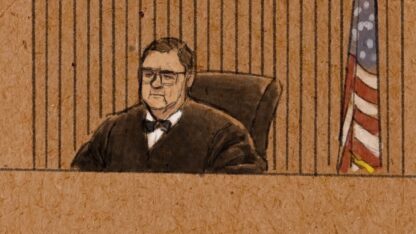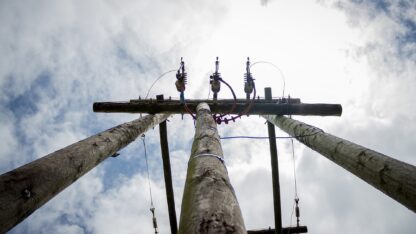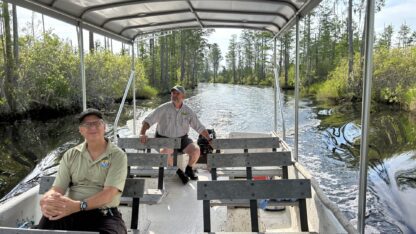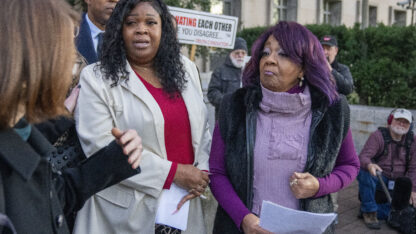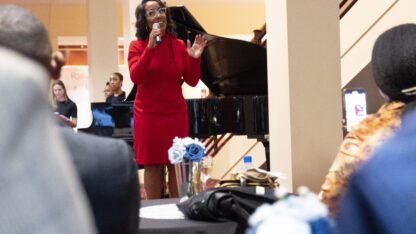New PBS Documentary Will Focus On Sandra Day O’Connor, First Female Supreme Court Justice

Former Supreme Court Justice Sandra Day O’Connor delivers the 2010 Sidney Shainwald Public Interest Lecture at the New York Law School, Tuesday, April 6, 2010 in New York. (AP Photo/Mary Altaffer)
Mary Altaffer / AP
When Justice Sandra Day O’Connor was confirmed to the Supreme Court of the United States in 1981, a rare moment of bipartisan consensus graced the Capitol. Her remarkable life is the subject of a new documentary on PBS, part of the American Experience series. “Sandra Day O’Connor: The First“ was produced, written and directed by Michelle Ferrari, the filmmaker behind another PBS special on women’s suffrage, “The Vote.” Ferrari joined “City Lights” host Lois Reitzes via Zoom to talk about the origins and influence of the Supreme Court’s fascinating first female Justice.
Interview highlights:
On O’Connor’s early life:
“She grew up in the middle of nowhere, and for the first many years of her life, was an only child,” said Ferrari. “Her first friends, aside from the animals on the ranch, were cowboys. So her earliest acquaintances were adults — her parents, and these ranch-hands. And I think she learned poise very early in her life, which served her well … And then, too, she learned the independence that you learn living in the middle of nowhere.”
“She’s 15, and … she’s delivering lunch to the ranch-hands,” said Ferrari. “En route, she gets a flat tire. So there she is, in the middle of nowhere, no paved roads, all on her own, and has to change the tire and get to the roundup on time. Unfortunately she does not get there on time, she’s a bit late, and when she arrives she’s quite proud of herself for having changed a tire single-handedly … [Her dad] says, ‘Next time, leave earlier.’”
The first female Justice’s relationship to feminism:
“One of her biographers, Linda Hirshman, refers to her as ‘at once a girl’s girl and a man’s man.’ I think she was very comfortable with people, and she wanted to be taken on her own terms — not as a woman, not as a professional woman, necessarily — just as a person,” said Ferrari. “She was disinclined toward any kind of showy identification with a cause, or an identity. Nevertheless, she knew that she had been discriminated against … and I think she felt the sting of that, even though she didn’t like to talk about it in those terms. Although I would never say she was a robust champion of women’s rights, she was attuned to the way people get put into boxes, and she wasn’t having it.”
Across the aisle:
“If you approach her story at first glance, it’s sort of obviously about shattering the glass ceiling… So the fact that she was the first woman on the Supreme Court was, in many ways, the film’s reason for being. But what struck me is that, at some juncture, and I’d argue it was even before Ruth Bader Ginsburg joined the Court, ‘O Connor’s story was no longer about being the first. It was about her as a justice, and her style on the bench, and I was very intrigued by that style; by her vision of the Court’s role in American life, and her penchant — indeed, her gift — for building consensus, which increasingly seems to me a lost art.”
“In a nation of 300 million people, there’s … a real need for caution and compromise, for people who pull toward the middle,” said Ferrari. “Because I think most Americans, at least when we’re not faced with a stark either-or choice, tend to be quite moderate in our views. I think a lot of people recognize the complexities of some of our more persistent social issues, and the fact that she did made me very enamored of her.”
“Sandra Day O’Connor: The First” premieres September 13 on PBS. More information is available at www.pbs.org/wgbh/americanexperience/films/sandra-day-oconnor-first/.
